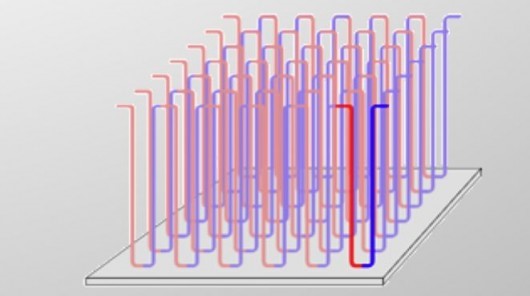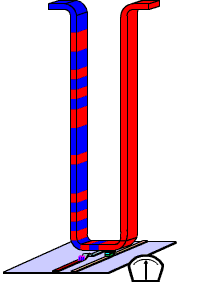IBM has improved nanotube manufacturing for Racetrack Memory

IBM has been working for several years to create a new type of non-volatile memory suitable for use in the industry. One of the promising technologies called Racetrack Memory. Such a system works with magnetic interaction, and not with an electric current.
The principle of recording in Racetrack Memory is based on the movement of the so-called magnetic domains through spin currents. In this case, the developers were able to significantly reduce the size of the magnetic domains, which made it possible to ensure a much higher recording density than before. All this became possible thanks to the development of technologies in the field of spintronic magnetic resistive devices and materials.
')
About a year ago, the IBM lab in California managed to create a working prototype of such a memory, its physical model. Specialists, using a prototype of a memory module, were able to create, move and detect a magnetic beam, which in such a system is a way to write a logical zero or one. It was possible to generate not one, but 250 magnetic domains, in the described prototype of the system. Now IBM has completed work on the creation of reliable nanotubes, from which such memory modules are created. This achievement brings the stage of practical implementation of the project, with the possibility of producing new type of memory modules.
In the future, experts hope, it will be Racetrack Memory that will expand the capabilities of physical storage media, including capacity. With an equal size with standard flash-based storage media, the new drive will have approximately 100 times more space. At the same time, the number of rewrite cycles is theoretically infinite, unlike the same flash-memory.

A separate track memory module consists of a specific nanotube shape, as well as two magnetic heads that read and write information. Magnetic domains in this case serve as a means of transmitting information.

This picture "walks" on the web for over 6 years, but it optimally reflects the process of the new memory
The usual portable media player, in the case of the practical implementation of the results of IBM research, will receive a new type of information carrier with a capacity of up to 6-7 terabytes. According to Stuart Parkin (an interesting interview with him can be found here ), now you can create a working module Racetrack Memory, and not just a prototype, which is trying to implement experts from IBM. However, a lot of time must pass before the technology is released - about 4-5 years.
Source: https://habr.com/ru/post/238955/
All Articles